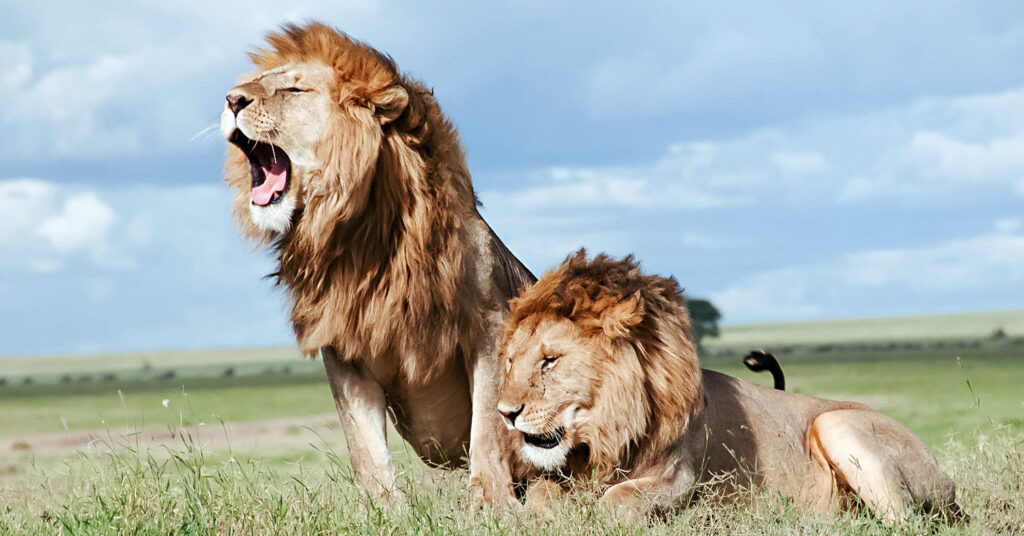South Africa is set to ban captive lion breeding.
Once adopted by the Department of Environment, Forestry, and Fisheries (DEFF), new legislation will make all captive lion breeding illegal in South Africa.
This will help to eliminate the so-called “snuggle scam” — tourists posing and interacting with young lions for photographs — as well as canned or captive trophy hunting.
According to Humane Society International (HSI), the decision is part of a range of recommendations recently announced by South Africa’s Minister of Environment, Forestry, and Fisheries, Barbara Creecy.
She also said that there will be an end to the commercial sale of all lion derivatives, which includes both hunting trophies and the body parts used in traditional medicines and folk remedies, such as bones.
“This is a massive celebration for South African lions,” said Dr. Audrey Delsink, wildlife director of HSI-Africa. “Lions will no longer have to suffer in horrid conditions for someone’s selfie, canned trophy, or have their body parts harvested for wines and powders.”
“Lack of awareness of the suffering behind every cub photo or pay-to-pet experience, is one of the biggest drivers of this industry,” she added.
The captive lion hunting industry has boomed in recent years. Currently, between 8,000 and 11,000 captive-bred lions are held at more than 260 lion farms nationwide.
An HSI analysis of trade data found that 4,176 lion trophies were exported from South Africa between 2014 and 2018. Approximately 18,500 trophy hunters visit the African continent each year to kill around 105,000 animals. HSI also notes that nearly 15,000 of these trophy hunters are from the U.S.

What is captive bred lion hunting?
Captive bred lion hunting involves the breeding, raising, and killing of lions for entertainment and status. It is comparable to international blood sports such as fox hunting, which has frequently made use of a “bagged” fox to ensure a kill. Canned hunting is popular (and controversial) for this reason, and involves the tracking of lions within relatively small, fenced-in enclosures.
According to HSI, lion cubs born on breeding farms can be separated from their mothers at just a few hours old, also known as “speed breeding.”
These lions are typically kept in enclosures for life, sometimes without appropriate food, and frequently without the ability to express natural behaviors. For example, lions are sociable animals and are the only cats that choose to live in groups or “prides” in the wild. Depriving them of this fundamental need has a hugely detrimental effect on their wellbeing.
The cubs themselves are raised by hand, sometimes by international volunteers who falsely believe they are helping support orphaned animals. While still young, they are used as visitor attractions and wildlife tourism.
Once adults, the same lions are hunted for sport and trophies, or simply slaughtered for their body parts. The international trade of bones from wild lions is prohibited, but up until now the exporting of bones harvested from captively bred animals has been legal.
How would a captive lion ban impact wild animals?
Craig Packer, a zoologist and ecologist well-known for his work with lions, told LIVEKINDLY that banning captive lion breeding could potentially negatively impact the wild lion population.
“The captive breeding industry has created a market for lion bones that simply didn’t exist 10-20 years ago,” he said. “As long as the captive industry continued, the spillover demand for lion bones from wild populations appeared to be limited to a few sites in Mozambique and Zimbabwe.”
“The concern now is that shutting off the supply of captive lion bones will significantly increase demand for bones from wild lions,” continued Packer. “It remains to be seen if these fears are justified, but wildlife managers would be wise to take extra precautions to protect their lions in the coming years.”
The decision to implement new legislation follows a Ministerial High Level Advisory Panel review of South Africa’s existing policies and practices concerning the handling, breeding, hunting, and trade of elephants, rhinoceros, leopards, and lions. Four of the “big five” species most valued by trophy hunters, along with buffalo.
While all of the big five are threatened, their conservation statuses vary. The African lion is currently listed as vulnerable on the International Union for the Conservation of Nature (IUCN) Red List of Threatened Species, and their population continues to decrease.
According to the World Wildlife Fund (WWF), the number of African lions has fallen by 40 percent over the last three generations. Three-quarters of the current population is in decline, and there are just 20,000 animals left in the wild.
Experts have also emphasized that threats such as poaching, the changing environment, human-wildlife conflict, and climate change, present more danger to lions than trophy hunting.


